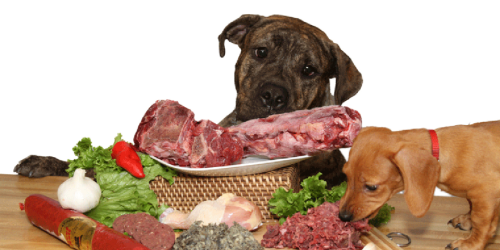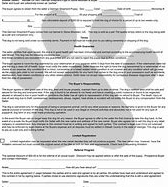Has anyone heard of Oesteochondritis
Yes. Osteochondritis Dissecans (OCD) is a common problem in some breeds.
Osteochondritis dissecans, commonly known as OCD and osteochondrosis dissecans, is a disease of the cartilage that affects the joints in a dog’s body. In any joint in the body two bones come together and movement is allowed between them. Where the two bones meet, an exceptionally smooth area of cartilage covers their surfaces. This acts as a cushion and protects the underlying bone. If anything disrupts this smooth cartilage surface, movement of the joint becomes painful. In a dog with OCD, this cartilage is damaged or grows abnormally. Instead of being attached to the bone it covers, it separates or cracks, causing great pain. In some cases, small pieces of cartilage break off and float free in the joint. These pieces of cartilage do not die, but rather continue to grow and increase in size. These are known as joint mice. Approximately 15% of all dogs will develop OCD. This article will cover the disease and its treatment and will explore some of the suspected causes.
[url=http://www.peteducation.com/article.cfm?c=2+1569&aid=464]Read some more[/url]
-
- · sadhbhsdad
- ·
My dogue has a cracking noise coming from her shoulder when she moves. Had her at the vet tonight and he thinks it could be Oesteochondritis of the shoulder. X-rays are planned for Wednesday so hopefully he will know for sure what the problem is then. I first heard this back in November but then it seemed to clear up with only the odd repeat, but over the weekend it seemed to be with every move she made so called the vet and he saw her this evening. Fingers crossed its not serious. -
- · gsicard
- ·
Yes. Osteochondritis Dissecans (OCD) is a common problem in some breeds. Osteochondritis dissecans, commonly known as OCD and osteochondrosis dissecans, is a disease of the cartilage that affects the joints in a dog’s body. In any joint in the body two bones come together and movement is allowed between them. Where the two bones meet, an exceptionally smooth area of cartilage covers their surfaces. This acts as a cushion and protects the underlying bone. If anything disrupts this smooth cartilage surface, movement of the joint becomes painful. In a dog with OCD, this cartilage is damaged or grows abnormally. Instead of being attached to the bone it covers, it separates or cracks, causing great pain. In some cases, small pieces of cartilage break off and float free in the joint. These pieces of cartilage do not die, but rather continue to grow and increase in size. These are known as joint mice. Approximately 15% of all dogs will develop OCD. This article will cover the disease and its treatment and will explore some of the suspected causes. [url=http://www.peteducation.com/article.cfm?c=2+1569&aid=464]Read some more[/url] -
- · desiree
- ·
and it often goes together with ED -
- · sadhbhsdad
- ·
Well its not OCD. The vet could not find any signs of OCD. I have been advised to restrict her exercise to lead on only, no running or rough and tumble (that will be difficult with a pup) I have been asked to return for xrays at 1 year old so thats 5 months away now but if there is any trouble betweenn now and then they might stick in a camera and have a look. -
- · Carlos1122
- ·
That is good to here maybe a just a bad sprain. I'd be giving her MSM/Glucosamine/Chondroitin to help repair muscle and connective tissue & cartilage here is a link for more info http://www.glucosamine-arthritis.org/glucosamine/MSM.html. I used it my self for a back problem around 2000 I noticed a difference in about 4 days it really works to repair not mask like painkillers, I have recommended it to many and bought it for many people it works. They sell it for pets at almost all pet stores but it might be cheaper to buy human grade the best most absorbed (about 80%) is liquid form Weber brand has a good one, hard pills (about 25%) powder (about 35%)and Glucosamine HCL hydrochloride is 50% more absorbed then sulfate. I'd give your pup 500 Mg of each twice a day you can do it forever or until she is 100%. I'd also give Vit C in the same dose as above & a B-Complex very important for healing. This stuff really works to repair most any thing in the body, it comes from bones and crab shells and many other sources people and dogs no longer eat marrow like are ancestors did for thousands of years so it is missing in most human and pet diets.
Discussions With Recent Posts
"Dog Owner's Home Veterinary Handbook" The classic bestseller--expanded and updated The guide dog lovers have relied on for more than twenty-seven years, this handbook has been extensively revised to include the latest...
-
Kevin and Debby Nicholson
- Books and Literature
- Replies (1)
The Pros and Cons of Having Guardian Dogs at HomeHaving a guardian dog can enhance security and companionship, but it also comes with responsibilities. Evaluate your lifestyle, living space, and commitment level before welcoming a furry...
Interesting photos. How does the Bullmastiff perform in the Brazilian heat? I have friends in Recife where it's 80s year round and very few Molossers survive there. I do know that some Brazilian Police like the Tropa de Elite take pride...
-
BULLMASTIFF BRASILEIRO
- Replies (45)





